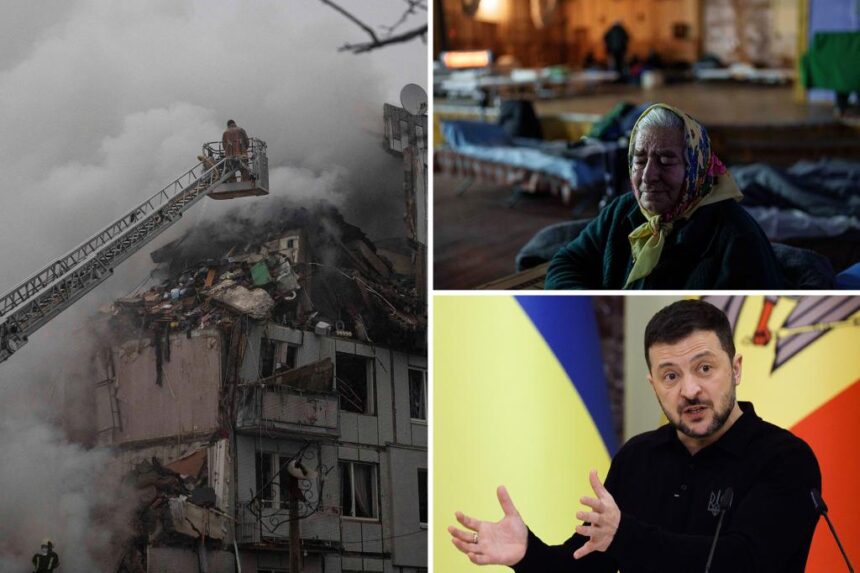Russia launched a devastating attack on Ukraine over the weekend, using a combination of drones and missiles that resulted in the deaths of 12 people and widespread damage to infrastructure. Reports indicate that a total of 123 drones and more than 40 missiles were deployed, targeting buildings, a kindergarten, and energy facilities across multiple regions.
In response, Ukrainian forces managed to intercept and redirect a significant number of the drones, while details on the missiles used were not provided. Ukrainian President Volodymyr Zelensky condemned the attacks, stating that they were acts of terrorism that required increased support to defend against Russian aggression.
Russian forces acknowledged targeting Ukraine’s gas and energy infrastructure, claiming to have shot down 108 Ukrainian drones in retaliation. Emergency power outages were implemented in seven Ukrainian cities to prevent a system collapse, but were later lifted after three hours. This marks the second instance this year where such measures were taken to prevent energy shortages.
Despite the attacks, unseasonably warm weather has helped Ukraine maintain its energy grid without resorting to scheduled blackouts or heating cuts, frustrating Russia’s attempts to exert pressure through energy manipulation. The assaults coincided with discussions between President Trump and Russian President Vladimir Putin on finding a resolution to the ongoing conflict.
US officials are considering advocating for a cease-fire in Ukraine, proposing that the country hold presidential and parliamentary elections that have been postponed due to the war. The outcome of these elections could potentially pave the way for negotiations with Russia towards a lasting peace agreement.
The situation remains tense as both sides navigate diplomatic efforts and military engagements. The need for international support and a concerted effort to address the root causes of the conflict are paramount in seeking a peaceful resolution.








